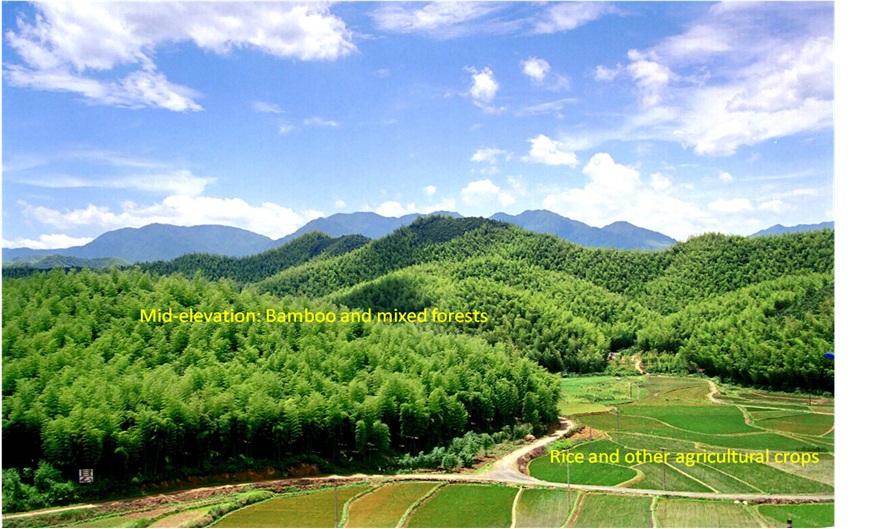Productive bamboo landscapes of Western Zhejiang
24.11.2011
-
SUBMITTED ORGANISATION :
-
International Network for Bamboo and Rattan (INBAR)
-
DATE OF SUBMISSION :
-
24/11/2011
-
REGION :
-
Eastern Asia
-
COUNTRY :
-
China
-
SUMMARY :
-
The sustainable harvesting of bamboo from natural and managed forests is an important livelihood activity for communities from much of China, Asia and the global South in general. The ability of bamboo to meet the economic needs of people without exceeding the carrying capacity of the environment has been best exemplified by its use in the mountainous areas of Zhejiang, China, notably in Anji and Lin’an counties which are two of the major areas in China for the production of bamboo timber (Phyllostachys pubescens) and bamboo shoots (Phyllostachys praecox and Phyllostachys pubescens). Whilst extraction of bamboo from forests for household and agricultural purposes is commonly practiced by people around the world, the development of specific silvicultural and processing technologies by Zhejiangese farmers and artisans over at least the last 800 years represents a unique understanding of both bamboo’s properties for human utilization and its environmental benefits within an agricultural system.
-
KEYWORD :
-
Bamboo, production forests, sustainable forest management, non-timber-forestry products
-
AUTHOR:
-
Dr.Lou Yiping is the Director of the China Partnership Programme at the International Network for Bamboo and Rattan, an international intergovernmental organisation dedicated to improving the social, economic, and environmental benefits of bamboo and rattan. Giles Henley is a Project Officer in the Programme. INBAR has recently completed a three year project on further integrating biodiversity into production bamboo forests in order to maximize ecological benefits. More information can be found at www.inbar.int



